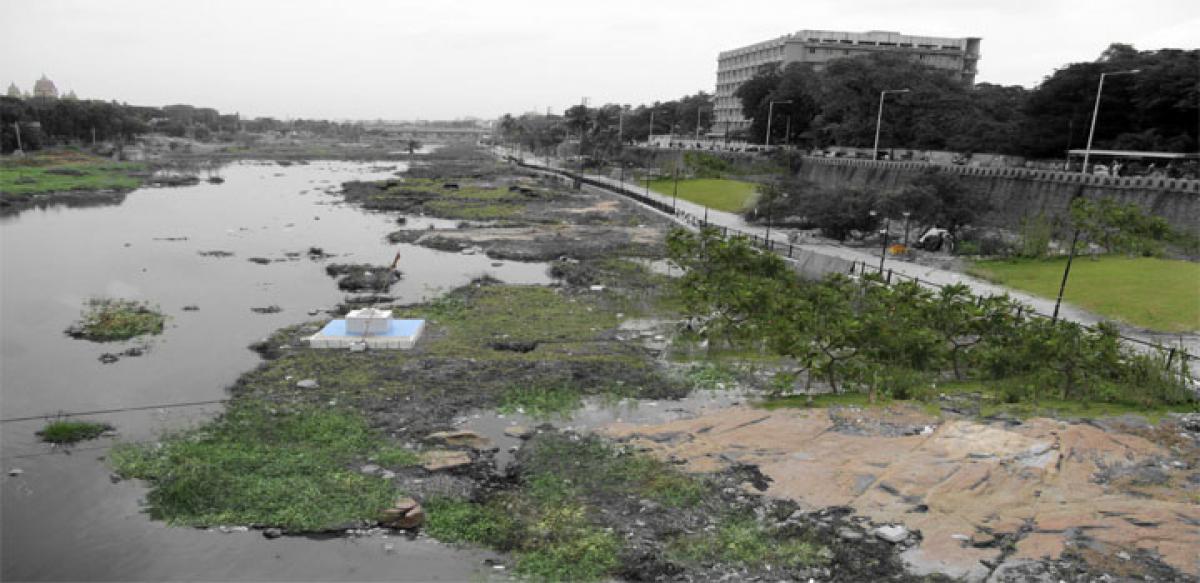Just In

The Telangana government has run aground on plans to save River Musi from the clutches of pollution.All efforts and plans to clean up the river that skirts the city have either failed or have proven to be ill-conceived.

Hyderabad: The Telangana government has run aground on plans to save River Musi from the clutches of pollution.
All efforts and plans to clean up the river that skirts the city have either failed or have proven to be ill-conceived.
The river is getting murkier by the day and it has become a hindrance to the brand image of Hyderabad.
After spending Rs 405.31 crore and losing out 15 years, the fate of River Musi is still as bad as it was in 2001.
The river rejuvenation under the ‘Abetment of Pollution of River Musi Project’ since the year 2001 has not yielded results and the State government’s proposal for phase II has been rejected by the Central government.
With no hope for a sanction for phase II, environmentalists and social scientists are clamouring for a rethink and want the government to come up with a fresh plan.
They feel that the need of the hour is to duplicate the projects such as Sabarmathi River front in Ahmedabad and Gomati river front in Lucknow and to follow the Gujarat model where it had constituted a special purpose vehicle (SPV) known as Sabarmati river front corporation.
M Padmanabha Reddy, secretary of the Forum for Good Governance, says: “The phase I of the project is a failure and it is time for the government to look afresh.
Given the refusal of the Central government to the State’s proposal of Rs 750 crore phase II project in 2011, the government needs to rethink, adds Reddy.
Environmentalists say that construction of STPs would not serve the purpose there is a need to socialise the river and cleaning the Musi should be given top priority.
As part of the Abetment of Pollution of River Musi Project in phase I, five Sewerage Treatment Plants (STP) with a capacity of 592 MGD were set up at Amberpet, Nagole, Nallacheruvu, Ziaguda and Attapur but never worked to full capacity.
The interception and diversion of dry weather flows of 18 nalas flowing into the Musi on either side of the river stretch in the twin cities proved defective leading to sewerage directly entering into the river.
The sewerage system for the twin cities was constituted at Amberpet in 1931 with a 12 MGD capacity that served five lakh population but after 84 years and more than 90 lakh people being added to the city,
the age-old sewerage system could not take the load and as a result excess flows were diverted into natural nalas which joined the Musi.
Several initiatives such as the construction of rubber dam near the High Court at an estimated cost of Rs 50 crore did not yielded result and became a source of mosquito breeding.
The project was subsequently shelved. Further, 12 industrial development areas within 30 km from Hyderabad which are into synthetic organic chemicals, electroplating, oil mills, lead extraction, distilleries, textile and others have led to contamination.
Unless the government comes up with a fresh plan, River Musi which once caused floods and originates in Vikarabad and travels 150 km before joining River Krishna in Nalgonda district would end up in a trickle.

© 2024 Hyderabad Media House Limited/The Hans India. All rights reserved. Powered by hocalwire.com







